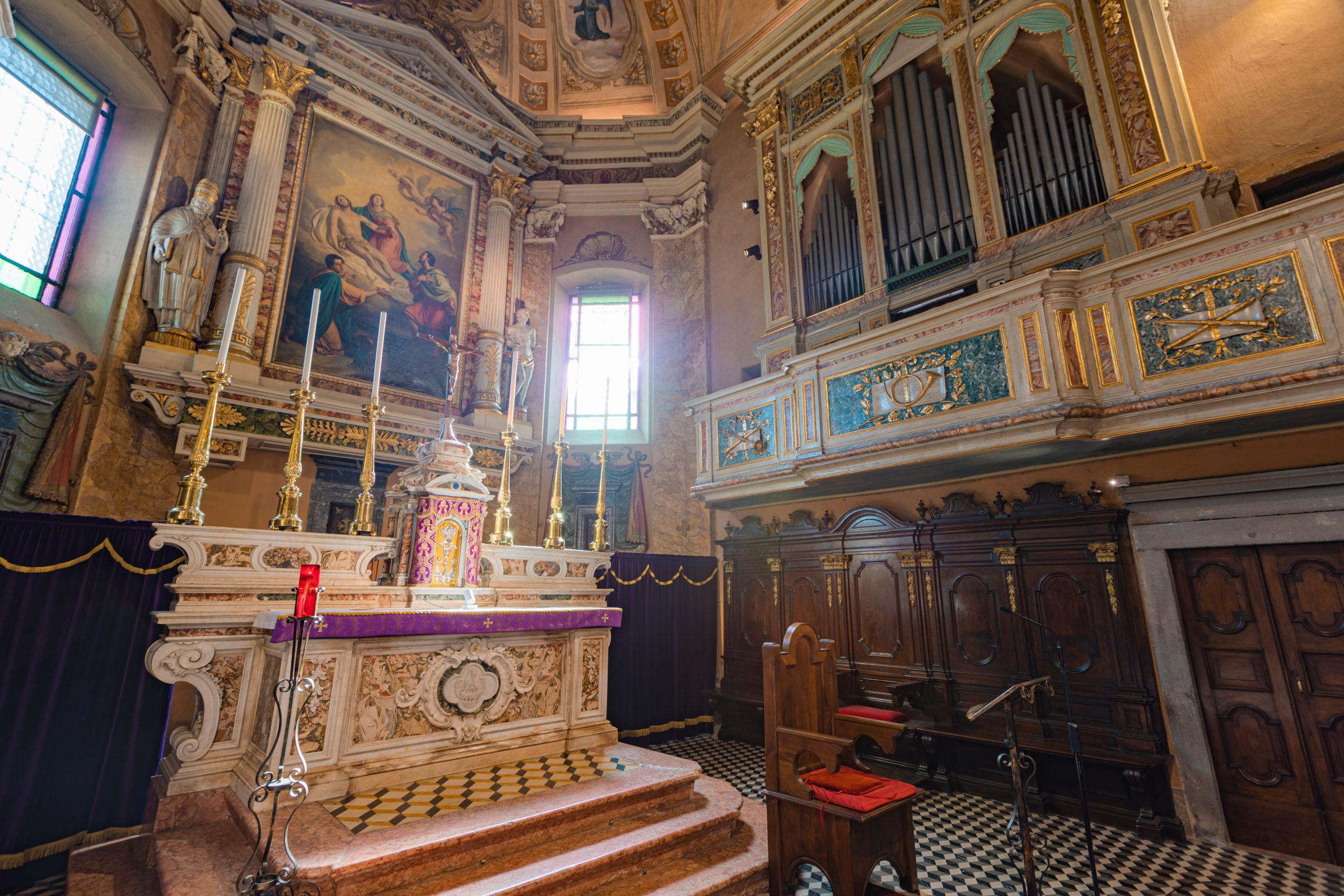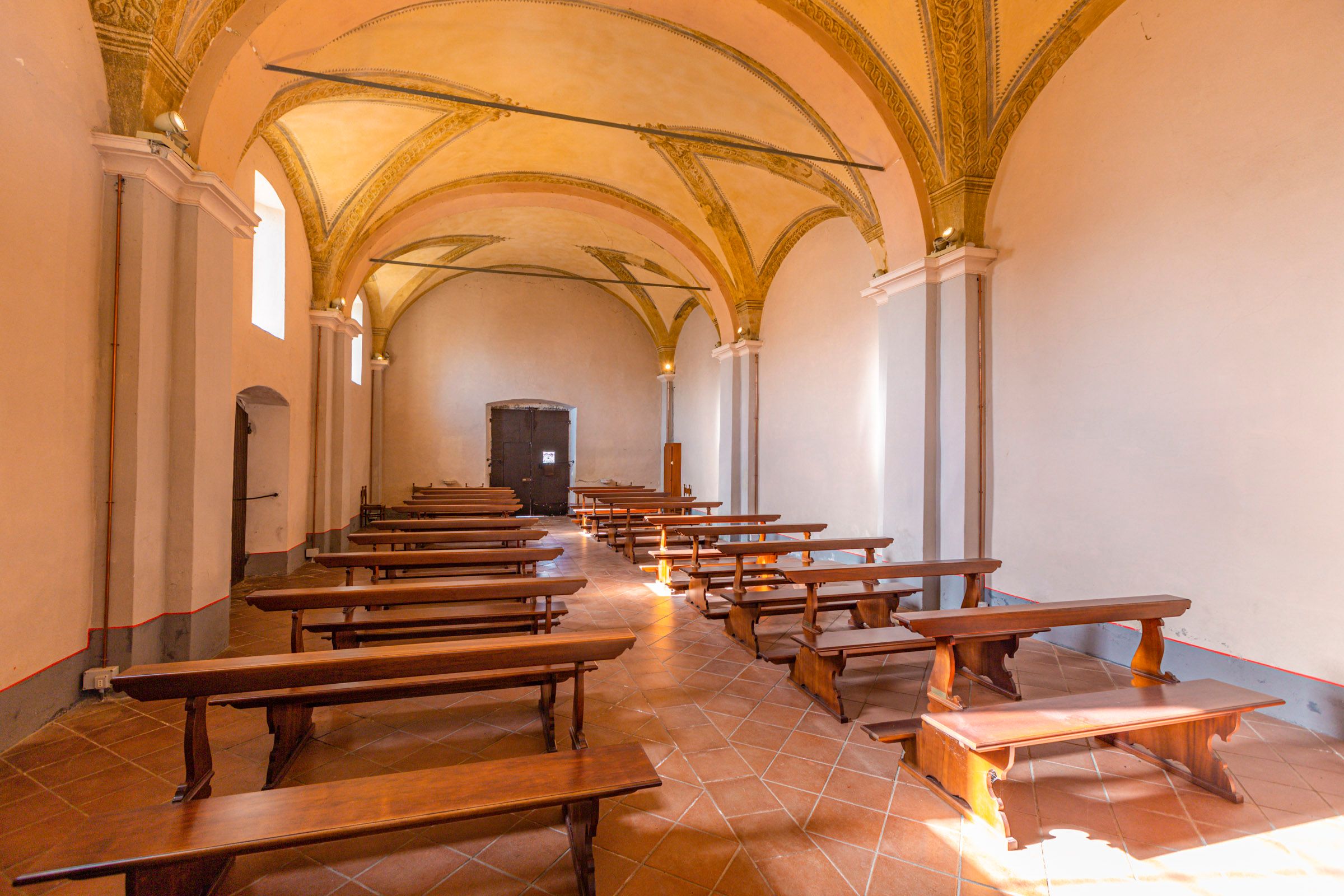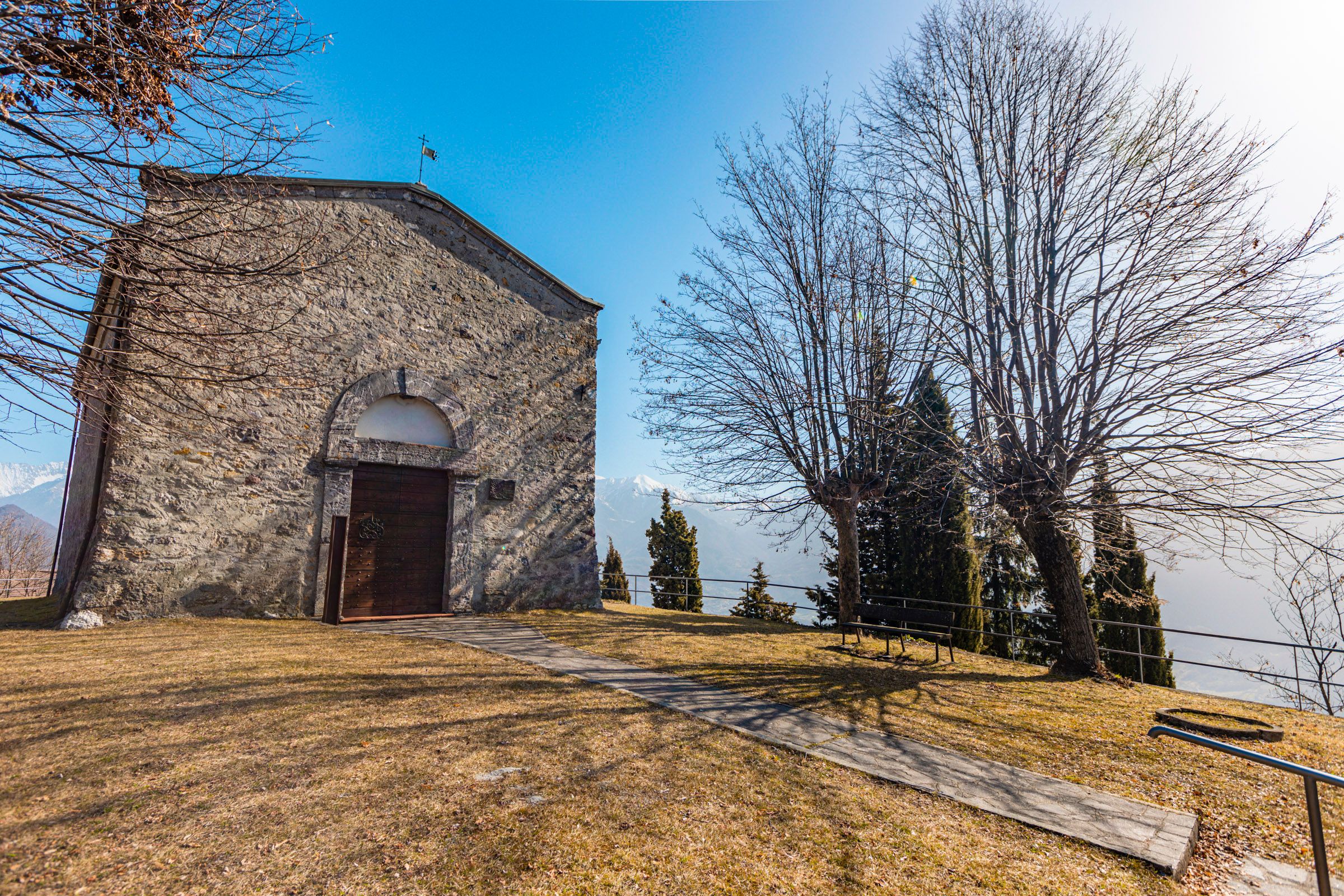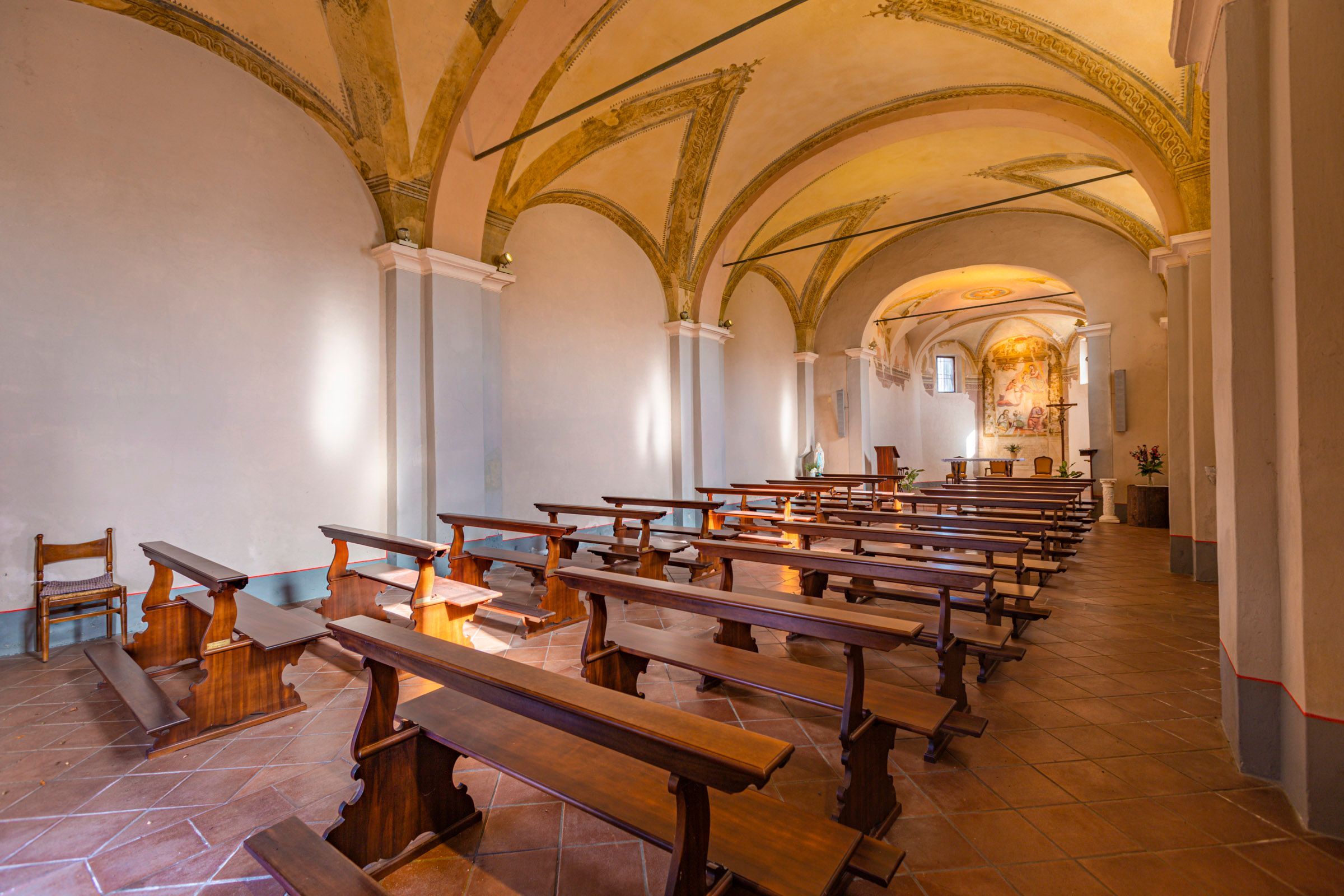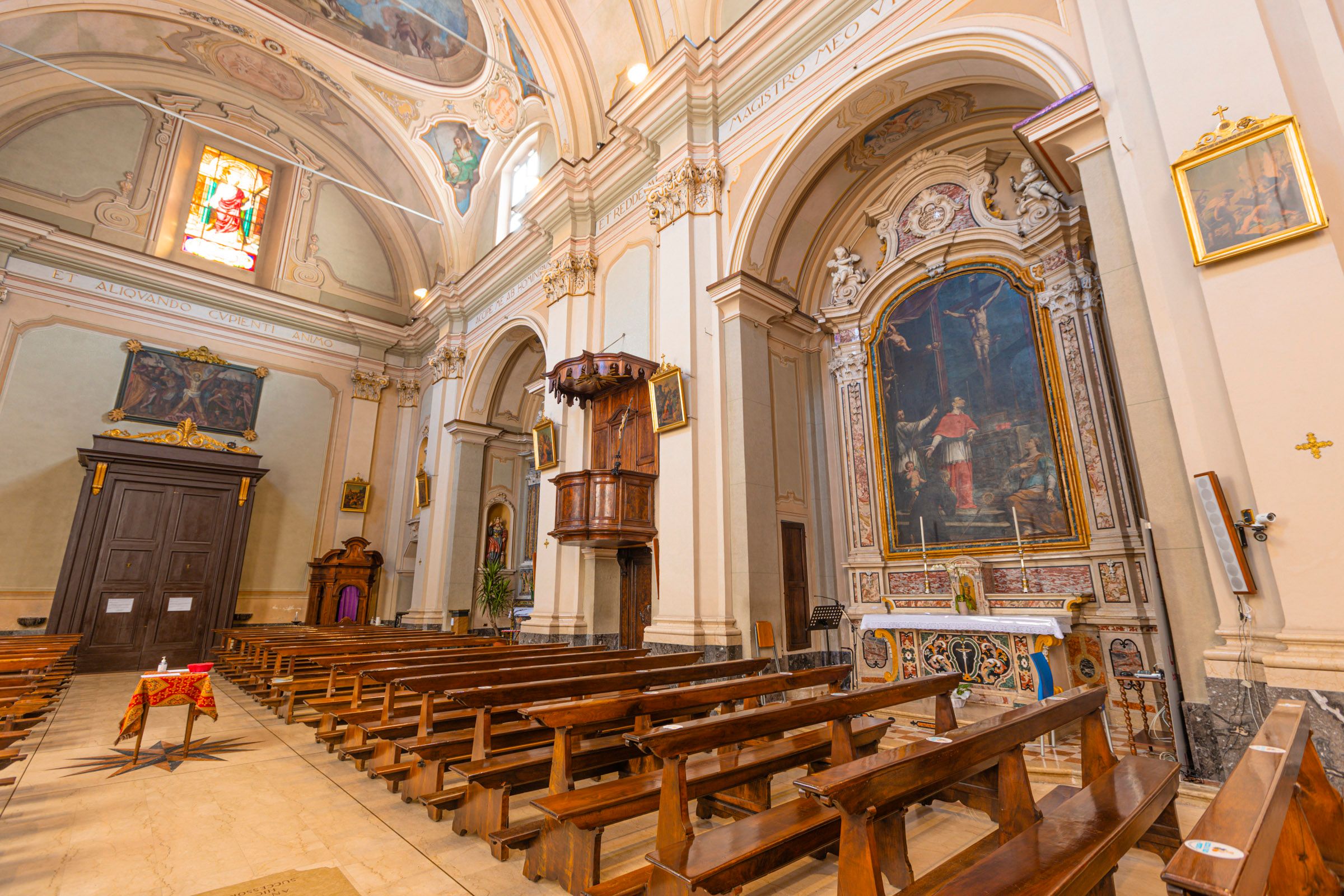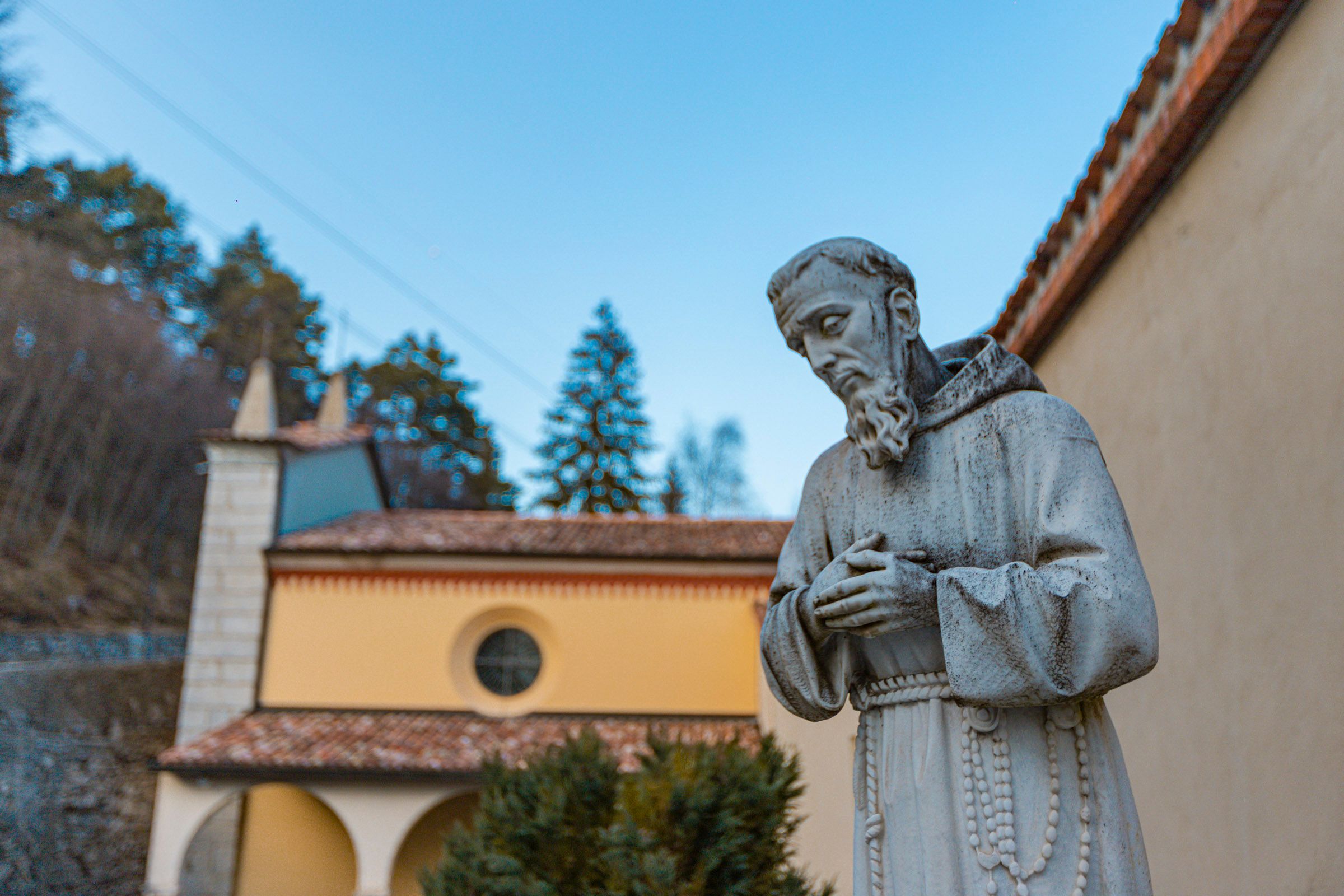CHURCHES OF ALTOPIANO
On the Altopiano del Sole there are numerous churches, places of spirituality, as well as buildings of artistic and architectural interest and beauty.
BORNO
ST JOHN THE BAPTIST PARISH CHURCH
The first documented record of the parish church of St John the Baptist in Borno dates back more than a thousand years, to the beginning of the 11th century. when the ancient church was dedicated to St Martin the Bishop. In the mid-fifteenth century, the church was completely renovated, but it was not until the mid-eighteenth century that it was enlarged by the hands of the master architect Girolamo Catteneo di Canè. The intervention greatly embellished it with new frescoes and today it is notable for its solemnity.
THE EXTERIOR
The exterior is very pleasant due to its location and the plants on the sides of the church. Note the centuries-old horse chestnut tree that with its branches protects everyone from storms and the sun. The bell tower, which has been remodelled and raised in height several times, features a concert of five bells cast by A. Crespi and placed there in 1825. The system for the operation is electric-manual, also for the “allegrezza” sound.
THE INTERIOR
The one-room interior presents a pleasant and valuable ensemble. The first altar on the right dedicated to Saint Joseph, made of wood, displays a canvas by Lattanzio Querena completed in 1829. It depicts the confessor saints Joseph, Gaetano da Thiene, Francis of Assisi and Rocco.
The second altar on the right, dedicated to Mary Queen of the Holy Rosary, also in marbled wood, features a statue of Mary Help of Christians. The antependium with relief statuettes of local craftsmanship, attributed to the Sculptor from Nona in Val di Scalve, Giovanni Giuseppe Piccini, is famous and valuable. Inside is a statue of the dead Christ by Fantoniana from 1716. In the upper part of the altar is the relic of Saint Vincent Martyr.
PRESBYTERY, ALTARS AND SACRISTY
In the presbytery, the valuable organ built in 1875-77 by the Manzoni workshop of Bergamo stands out on the right-hand choir loft. The high altar is the work of the sculptor Giacomo Novi executed in 1794. The valuable altarpiece by Sante Cattaneo, depicting the Madonna with Child and Saints John the Baptist and Martin, is set into the altarpiece.
The large sacristy is enriched with late 16th century furniture and valuable paintings such as a Nativity and the Immaculate Conception by Pietro Scalvini from the 18th century.
The altars on the left, similar to those on the right, are divided by the marble pulpit made in 1939, featuring bas-reliefs of the Redeemer and Saints Martin and John the Baptist. The first altar on the left holds a painting by Querena from 1829 depicting the martyred Saints Fabian, Sebastian, Lucy, Fermo and Rusticus. The last niche contains the baptistery, made of Simona stone and surmounted by a carved sign, culminating with the scene of the baptism of Jesus.
THE TRIDUUM MACHINE
The triduum “machine” for the dead is a precious and well-guarded work, similar to a large stage set composed of large decorated and painted wooden panels, together with angels and signs recalling the four Novissimi. The apparatus is set up and used during prayers for the dead on carnival days, before Lent.
In addition, the parish church of St John the Baptist houses relics, vestments, accessories and secular works that demonstrate the ancient traditions of the people of Borno connected to the Christian faith handed down from their ancestors to the present day.
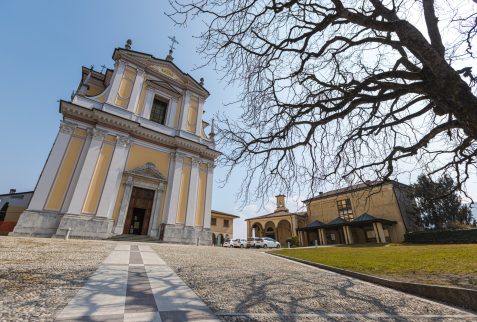
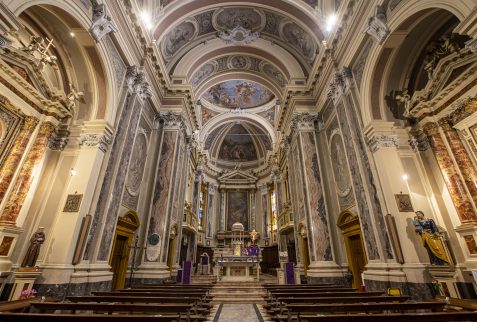
CHURCH OF ST. ANTHONY OF PADUA
In the splendid setting of the churchyard and square, stands the Church of St Anthony of Padua, with a portico dating from the 18th century. The little church has a very interesting structure from an architectural point of view: in the past it was most probably composed of two separate chapels. Inside, valuable frescoes can be seen; the older part on the right has 16th- and 17th-century decorations depicting Saints Martin, Peter and John the Baptist. On the left-hand side there is a lunette frescoed by Callisto Piazza in 1528, scientifically called Sacred Conversation between Saints Roch, Anthony, John and Martin and the Madonna and Child. Finally, we also find inside the church of St Anthony of Padua a large canvas depicting the tragic event of the fire of Borno in 1688.
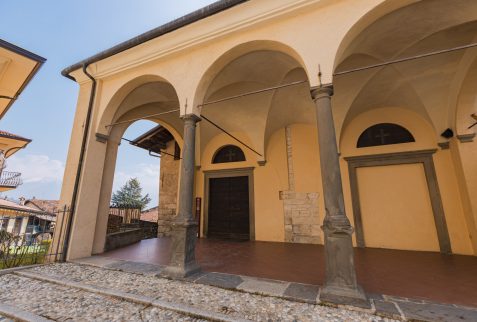
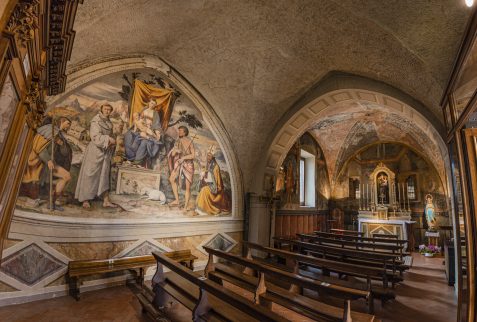
THE CHURCH OF SAN FERMO
The San Fermo complex stands at an altitude of 1868 metres. In the Camonica tradition the figure of San Fermo is traced back to Charlemagne and associated with the brothers Glisente (on the mountains of Berzo Inferiore) and Cristina (on the mountains of Lozio). They were hermits and to keep in touch, as tradition has it, they used to light fires for their signalling. The function of these places allowed a healthy spiritual experience and material shelter for shepherds and herdsmen who filled the pastures during the grazing season. The feast of the saint on 9 August is highly appreciated and participated in by the inhabitants of Borno and the plateau. The evening before, a large torchlight procession takes place, which winds its way along the mountain paths and reaches the village where the participants receive the long-awaited blessing.
CHURCH OF SAN FIORINO
It is an ancient place of devotion already in Roman times, the present structure dates back to around the 16th century. After restoration work, the name of one of the authors of the frescoes came to light, the Bornese Betinus de Rigoletis, dated 1504. The altarpiece, enclosed in a beautiful frame, depicts the Madonna with Child and Saints Fiorino and Giovannino from the 17th century.
OSSIMO SUPERIORE
PARISH CHURCH OF SAINTS GERVASIUS AND PROTASIUS
It was probably detached, as an autonomous parish church, from the Parish Church of Cividate in the 14th century. According to Sina, the church would have been founded by the monks of Tours on the basis of its name.P. Gregory in 1698, however, writes that when it was built (or enlarged) what remained of the ancient castle was destroyed.
THE INTERIOR
A single, spacious hall consisting of two bays with a hipped barrel vault, interspersed with transverse arches, very wide, limited by projecting laths or ferrules in correspondence with the underlying pilasters. These, in stucco, with mock yellow marbling, support the wide cornice and enclose the two full-centred arches of the two altars on each side, placed in the niches cut into the thickness of the walls. The capitals of the pilasters have rich composite decoration in white and gilded stucco. Equally rich is the decoration on all sides of the pilaster strips, on the capitals, in the ferrules, in the sub-arches and in the lunettes of the four altars on the side.
STUCCOES AND ORNAMENTS
These are stuccoes, partly gilded, of fine workmanship between the 17th and 18th centuries but still in 17th-century taste. Also stuccoed is the medallion surrounding the cartouche on the triumphal arch. The presbytery is rectangular, wide and covered by a barrel vault; the choir is three-sided polygonal, with a segmental vault. The vault of the nave, the presbytery vault and the choir vault are covered with late 19th century frescoes with medallions depicting episodes from the life of Jesus. The exquisite high altar, made of white marble stained with pink, bears a pelican (perhaps rebuilt) in high relief in the antependium. Also of fine workmanship is the tabernacle, with a door adorned with a chalice in gold and silver-plated foil. The altarpiece of the high altar is enclosed in a neo-classical soasa, adorned with fluted columns on the sides supporting a triangular tympanum. The choir is adorned with three 17th-century architraved aediculae, surrounded by a rich cornice of grey marble veined with white, with a high architrave and painted doors for relics and holy oils.
CHURCH OF SANTA MARIA ADDOLORATA
It is located in the churchyard to the north of the parish church. It is rectangular in shape with a polygonal apse and a double-sloping façade. In the centre is an architraved doorway in smooth Sarnico stone, except for simple mouldings, with a broken tympanum and a vase with a flame in the centre. Above, is a large window with a lowered arch, below which runs a batten that divides the façade horizontally. Single-nave interior with a barrel vault: a shaped, projecting cornice divides the walls from the vault, along the entire length of the church. Two small pillars separate the nave from the presbytery, which is pentagonal in shape with a barrel vault and with a segmental canopy in the apse.
It is recorded by Faino in 1658 as the Oratorium Pro Disciplinis dependent on the parish.
In the parish priest’s report of 1837 we read: “…there is the oratory of Our Lady of Sorrows near the church where Mass has been celebrated for a year” and in which the girls of the congregation and the brethren of the Blessed Sacrament gather at different times for their services. In the pastoral visit of Bishop Verzeri (1889-90) the Oratory is called ‘of the Sisters of the Immaculate Conception’.
CHURCH OF SAINT CARLO
It is recorded by B. Faino (1658) as “Oratorium S. Caroli in Colle” and dependent on the Parish Church of Ossimo Superiore. The difficult history of its erection is documented: from a letter of 1617 from the Vicar of Breno to the Bishop of Brescia, it appears that the land of Ossimo had been placed under interdict and the construction of the church had already been suspended since October 1616, because the inhabitants wanted to administer the money from alms without the intervention of the rector for the construction of this temple. The date of c. 1630, given to us by Sina, is therefore not exact, unless the end of construction did not continue until that year.
DESCRIPTION
Extremely simple façade with a gabled roof and architraved portal. It is enriched by Tuscan pilasters and is surmounted by a full-centre lunette with projecting seraglio. The whole is made of Sarnico stone so corroded that the inscription in beautiful capital letters engraved on the architrave is completely illegible. A similar but smaller portal is on the south side, in which three rectangular windows also open. The side wall ends with a simple rounded cornice.
In the north-east corner is a small bell gable. The apse also externally is polygonal. The church dates back to the 17th century. Just behind the building was a large beech tree that disappeared in 1963. The interior has a single nave, a rectangular floor plan divided into three bays by pilasters with wings attached to the walls that support the transverse arches and the hooked barrel vaults of each bay. The interior, unfortunately, has all been altered by modern, poor restoration work on the walls and pilasters, as well as the “sown” floor. The probable balustrade has disappeared, and so has the ancient altar to which, on the back wall of the choir, there was a fresco depicting a fake soasa with columns with vine shoots, a gilded architrave with a broken semi-circular tympanum on which stand two angels supporting a shield surmounted by a cardinal’s hat.
OSSIMO INFERIORE
CHURCH OF SAINTS COSMA AND DAMIAN
A chapel in the church probably existed as early as the early Middle Ages.
For A. Sina it would be a chapel founded by monks from the monastery of Tours.
According to Rizzi, but everything suggests that he has confused it with the Church of Ossimo Superiore, it would have been built on the ruins of a castle.
Some writers believe that the first document that gives us news of the church is Pope Callistus III’s decree of 28 June 1456 by which he instituted two clerics, abolishing the old ones, i.e. one for Saints Cosmas and Damian of Ossimo and one for St Vittore; but this document does not refer to our church, but to that of Piancogno near the Annunciata.
In 1670, the old church was remodelled, while in 1683, the bell tower that was next to the old building was begun; but in 1730, the church was also rebuilt following numerous bequests due to various benefactors. The construction of the church is due to master builder Domenico Tettamanti of Milan. In 1733, he completed the sacristy.
INTERIOR
INTERIOR A single nave, covered by a barrel vault of five bays, divided by five transverse arches resting on Corinthian pilasters; these are bordered on the sides by the arches of the three chapels on the sides, which are rectangular, and by the blind wall in which the two side doors open, originally perhaps as deep as the other chapels and then walled in with the formation of a short corridor to connect with the external doors. The chapels are not very deep and are covered by barrel vaults. The connection between the nave and the presbytery is provided by two wall segments placed diagonally, on which is, on one side,the organ with its wooden choir loft and neoclassical case, while on the other side was the pulpit (there is now a niche with a statue of St. Louis). Below, the two doors: one for the sacristy, the other for the bell tower. The presbytery is low, rectangular, covered by a ribbed vault and a choir with a horizontal termination joined by curved side elements.
CHURCH OF SAN ROCCO
Our people often turned to this saint with a faint thread of hope when any calamity raged, and the dedication to San Rocco suggests that this church was built in the 15th century (in fact, before its destruction it contained frescoes attributed to the Da Cemmo school).
In 1876, it was equipped with a bell tower and was restored, but later the church fell into disuse until it was completely destroyed by a bomb from an allied plane on 8 April 1945. It was rebuilt in 1953, according to an inscription on the triumphal arch. Modest façade with pilaster strips on the sides, simple cornice and triangular gable above; architraved portal with Botticino frame; above window with full-centre arch, lintel with faux ashlar ashlars in mortar. Modest small bell tower on the south side. The interior has a nave of four bays, with pilasters supporting transverse arches dividing the hipped barrel vault. Very low triumphal arch leading to a small, lower, horizontally terminated chancel, also with a hipped barrel vault. Altar niche with well-made 17th century statue of St. Roch in painted wood.
At the end of the nave, a 17th-century wooden confessional with pilasters on which a branch with gilded flowers is superimposed, as are the Corinthian capitals and the corbels that seraglio the small arches in the centre. An architrave concludes the confessional.
SHRINES AND CRUCIFIXES
The ‘santele’ scattered along the lanes and steep paths throughout the valley are mostly small constructions with a niche or cell, in the background of which the patron saint or saint is painted; not infrequently, the outer walls of the ‘santela’ are also frescoed. These small, primitive chapels are like materialised spiritual thoughts, and passers-by deposit and offer flowers picked from the meadows and a few offerings in the little box provided.
Particular attention is paid to the shrines of Pat, of the Cross, of the Purgatory Souls, of the Madonnina del Ponte della Rocca and of Santa Eurosia, as well as to the old cemetery of Ossimo Inferiore.
In addition to the ‘santele’, another popular religious expression is manifested in the ‘crucifixes’ and there are still many of them, scattered throughout the valley.
CROCEFIXES
It is generally constructed with laths that form the frame, with a rhomboid figure and the crucifix carved in wood is placed in the centre. Sometimes this sculpture shows a certain accuracy or even valuable carving work, but often it is a crude work that nevertheless expresses a rustic and profound expressiveness. Mountain crucifixes are often simple and poor, but they always have their spiritual significance and even if they are shabby or almost abandoned, we find everywhere that unknown hands place in the rustic ‘scatolòt’ or hang on a nail a bouquet of flowers, the humble thought of a prayer. Not infrequently, crucifixes and shrines form splendid close-ups in panoramic views, demonstrating with these small but admirable examples what the people can give when they sincerely express their soul, their profoundly human feeling. Faith merges with art and nature itself. Their meaning is pure, immune to the artificial folds of civilisation, they are almost reminiscent of the ancient votive altars placed in the presence of open nature, in that immense temple that is the universe, whose soil is the earth and whose vault is the grandiose vault of heaven.
